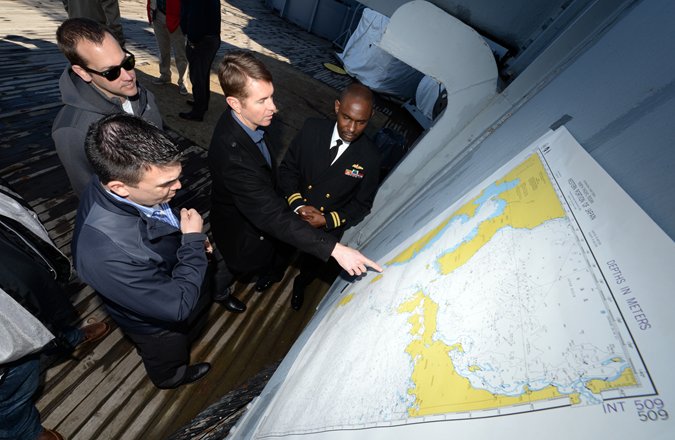Naval War College overhauls Joint Military Operations curriculum

NEWPORT, R.I. – Students in the Joint Military Operations (JMO) department at U.S. Naval War College (NWC) are getting more real-world experience through war gaming and operational-level planning beginning this trimester due to a major course upgrade intended to send better-prepared graduates to the fleet.
Over the past year, JMO faculty have taken student feedback, listened to the demand signal of Navy leadership and improved the course by placing more emphasis on warfare in the maritime environment and wargaming.
“In the past, we had taught a lot of theory,” said Capt. Richard LaBranche, JMO department chair. “Formerly for a final project, we had the students write a military operations order on how to defeat an Army on an island and that was the end of it. Now we make them write an order that’s focused on a war at sea with a near-peer competitor, and then we have them fight that operations order in a wargame.”
Adding active learning such as table-top exercises and a capstone wargaming event conducted in NWC’s wargaming department has increased student learning, student participation and student enthusiasm, according to the faculty.
“This was a ground-up build where we looked at what was missing [in the old curriculum],” said LaBranche. “We had to truncate some of the old coursework to make room for the new portion. We changed about 40 percent of the course. We now include more naval warfare theory, the employment of naval combined arms, and naval capabilities. We then put in table top, active learning exercises, where the students have to synthesize what they learned.”
The new course includes three active learning wargame scenarios and the students get immediate and valuable feedback from the exercises.
“They have to show us that they know how to fight,” said Bill Hartig, professor in JMO who helped design the new course. “And if they don’t do well, they are going to lose the battle. That’s a pretty big piece of feedback. Synthetic ships are going to sink and synthetic people are going to die.”
A winning strategy involves many factors, including a coherent operations plan that applies the use of combined arms to achieve objectives in the maritime environment.
“Each warfighting asset should be used most effectively as one part of a totally integrated symbiotic organism within given task forces,” said LaBranche. “Previous classes never had the opportunity, but with the advent of the new curriculum students are more deeply exposed to maritime warfare. They are also learning about the capabilities of our potential competitors and how to deal with them.”
LaBranche added that another aspect of the active learning environment is that different answers can be correct.
“There is no right answer, but there are answers that are more right than others,” LaBranche said. “This is the reality of the ambiguous environment.”
Educating students with this new curriculum allows the department to more completely fulfill two missions of NWC, to educate and develop leaders and to support combat readiness.
“These students will be high-value assets for any Navy staff,” added LaBranche, “because they are going to know a lot more about maritime planning and joint operations than a typical Navy officer.”
The success of having wargames included in the curriculum has been noted by the faculty and may result in more changes in the future.
“We are constantly changing our course to keep up with what works and what our students need to know,” said Hartig. “Next year we will add even more wargaming to the course.
“The problem is the students don’t want to stop. They are naturally competitive, and they love seeing how they are performing.”
NWC is a one-year resident program that graduates about 600 resident students and about 1,000 distance learning students each year. Its missions include educating and developing leaders, helping define the future of the Navy, supporting combat readiness, and strengthening maritime partnerships. Students earn Joint Professional Military Education (JPME) credit and either a diploma or a master’s degree in National Security and Strategic Studies or Defense and Strategic Studies. Established in 1884, U.S. Naval War College is the oldest institution of its kind in the world. More than 50,000 students have graduated since its first class of nine students in 1885 and about 300 of today’s active duty admirals, generals and senior executive service leaders are alumni.
